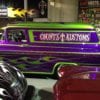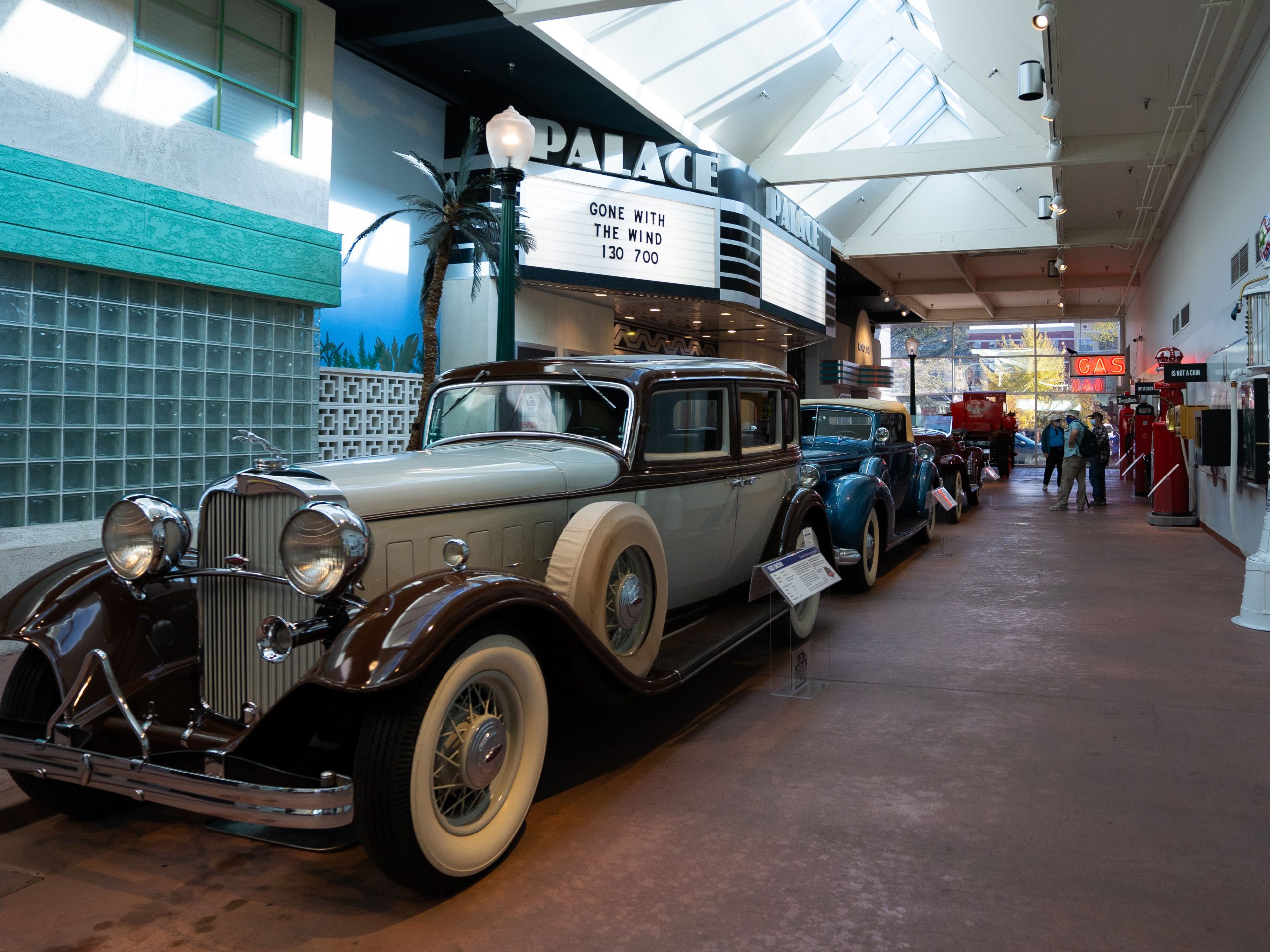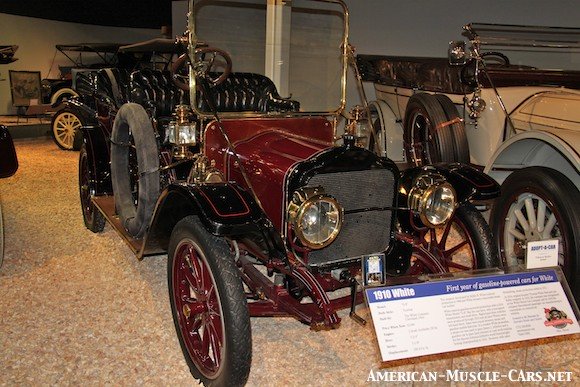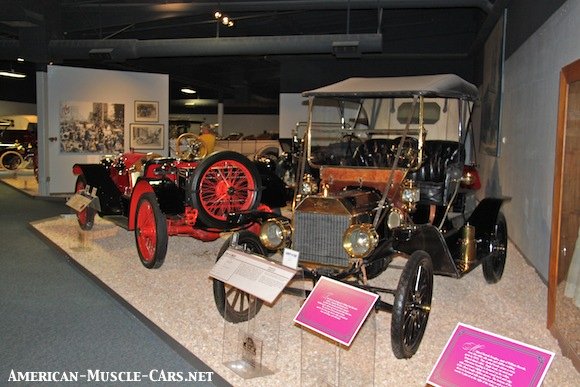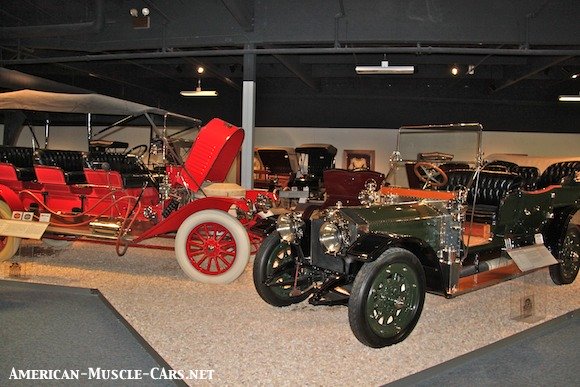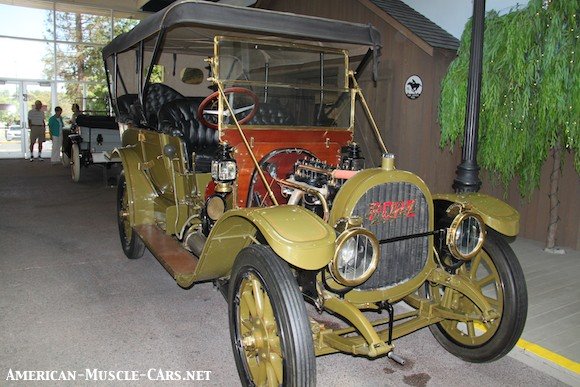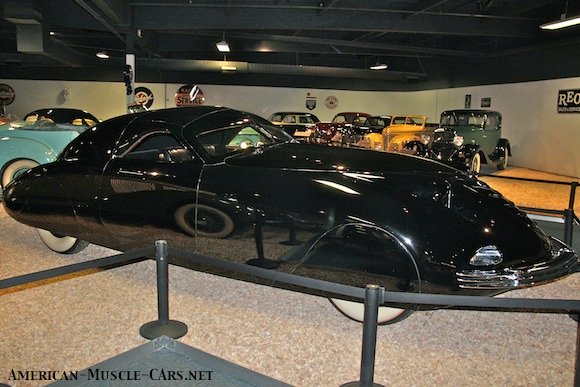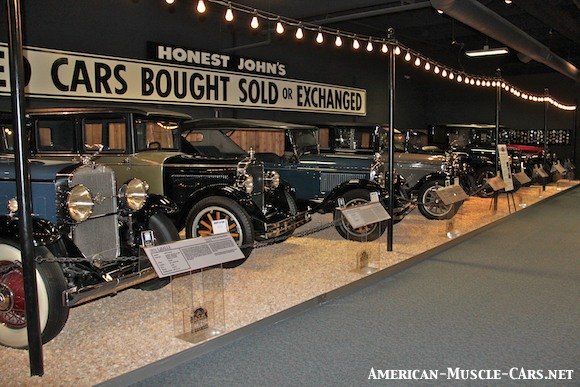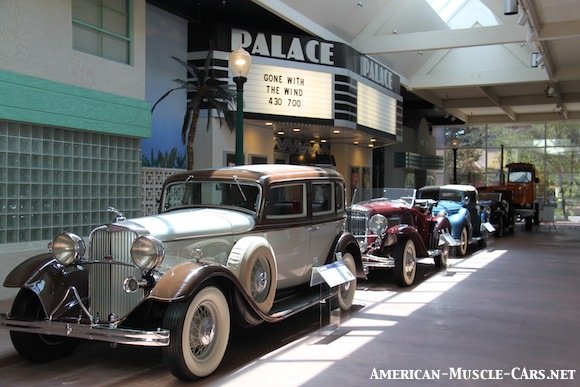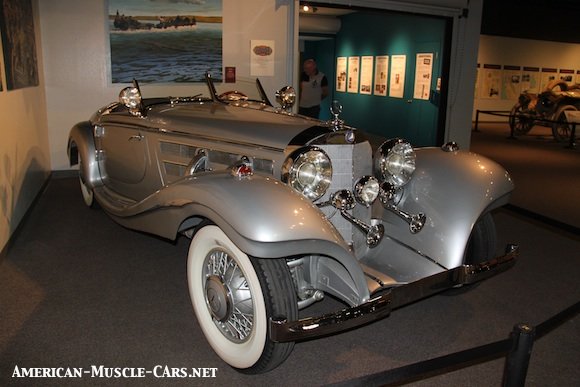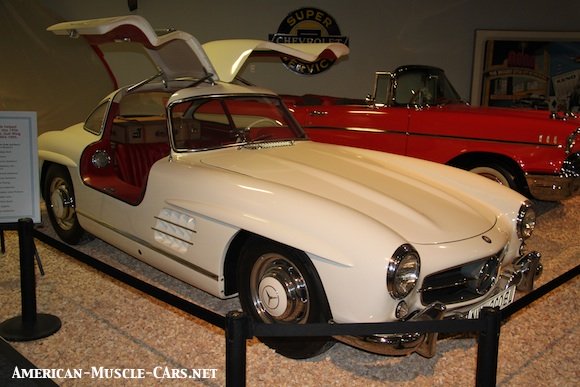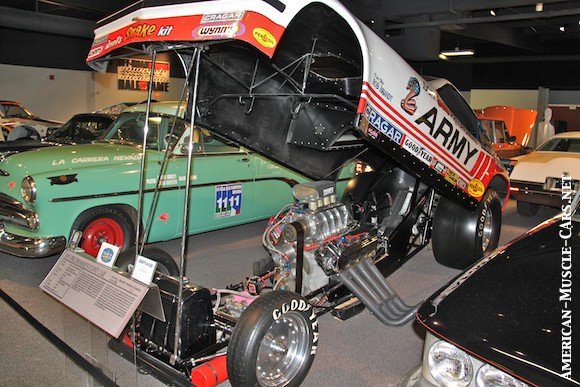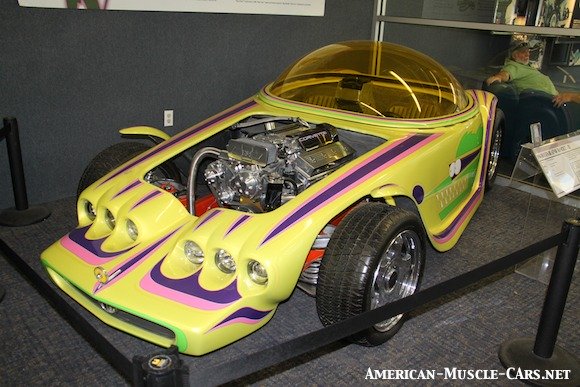National Automobile Museum
Reno, Nevada

NATIONAL AUTOMOBILE MUSEUM IS ONE OF THE BEST
The National Automobile Museum in Reno, Nevada has a long, rich history. It evolved out of the Harrah Auto Collection which was formed over many years by William “Bill” Harrah of Casino and Hotel fame. Harrah’s own story is fascinating and one worth delving into in greater detail. But for our purposes we will focus on his car collection. As his gambing empire and his personal fortune grew, Harrah began buying historically significant cars, motorcycles, boats, planes and just about everything else that interested him. By 1961 he had 1,400 pieces in his collection and housed them in a huge warehouse complex in Spark, Nevada (a suburb of Reno). I visited it myself as a boy in the mid-1960s when it was called the Harrah’s Automobile Collection. When he died in 1978 his hotel/casino empire and the car collection were sold off to Holiday Inns who immediately began to break up the collection and sell off the bits piece by piece.
RENO & NEVADA TO THE RESCUE
Both the City of Reno and the State of Nevada, along with throngs of fans were shocked by the prospect of losing the Harrahs Auto Collection. Through many financial maneuvers, both public and private, they managed to save the bulk of the collection, move it to Downtown Reno, and house it in a whole new, and totally modern, building. It was renamed the National Automobile Museum and opened for business in 1989. Today, it’s not only a local tourist attraction, and one of the finest car museums in the world, it’s a piece of American history and culture, and a great way to spend an afternoon in Reno.
National Automobile Museum
“Horseless Carriages”, pre-1916
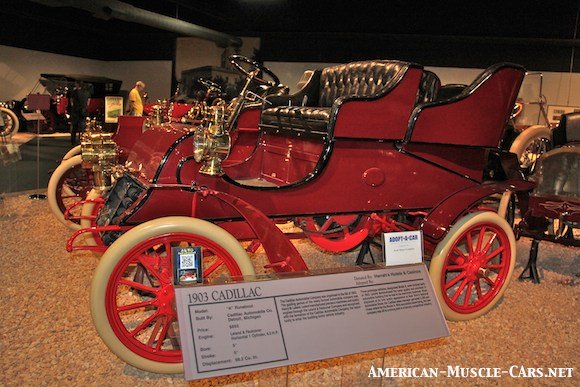
NATIONAL AUTOMOBILE MUSEUM BROKEN INTO GALLERIES
There are four basic galleries of cars at the Museum, separated by age or era. The first represents the dawn of the automobile and the enormous changes it made to the American landscape and culture. These antique cars are known as “Horseless Carriages”, as many were built by form carriage makers, and many had carriage-like characteristics.
ABOVE: This is a 1903 Cadillac. They were building high-end machines even then.
BELOW: A 1910 White.
ABOVE & BELOW: The cars in all the galleries are displayed in an attractive fashion, not all lined up in straight rows. Many are depicted in scenes of the day, with realistic dioramas and period-correct items including clothing, fashions, and commonplace items of the day.
National Automobile Museum
Vintage Cars, 1920s & 1930s

CARS OF EVERY ILK AT THE NATIONAL AUTOMOBILE MUSEUM
The second gallery is full of cars from the 30’s and 40’s, both mass-produced cars from Ford, GM, Chrysler and the like, but also highly specialized, unique one-offs, and limited production models, some of which you may never had heard of. Below is an example of this, a 1938 Phantom Corsair. This ultra-rare was designed by Rust Heinz of the Heinz Ketchup family. Strangely, it never reached full production.
ABOVE & BELOW: Just a few more examples of the extraordinary lengths that the National Automobile Museum goes to in creating lifelike dioramic displays to frame their cars in a period-correct environment.
ABOVE: High-end “rich folks” cars are also well represented. This is a 1921 Rolls Royce Silver Ghost finished in polished copper, brass and aluminum. What a beauty!
BELOW: Check out this 1936 Mercedes Benz 500K. Wow!
ABOVE: And it’s not all just cars. This is a working cutaway of a Lincoln V8 engine. Push the button (bottom-right) and the whole thing springs to life. Pistons stroke up and down the cylinders, the valves open and close, the gearbox turns. It’s a true think of beauty.
National Automobile Museum
Classic Cars, 1940s & 1950s
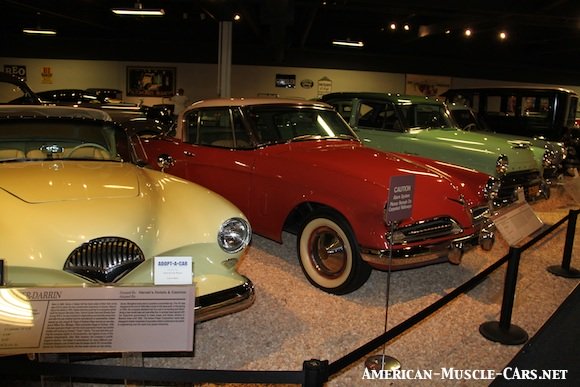
ABOVE: A mixed collection of odd-ball American cars that never quite made it. The yellow one is a Kaiser Darren, and the red one next to it is a Studebaker.
BELOW: A legendary 1956 Gullwing 300SL Mercedes. This particular car was taken to the Bonneville Salt Flats in 1959 where it set a Class D speed record of 143.769 mph.
ABOVE: Talk about a realistic diorama, this lovely ’54 Buick Skylark convertible sits in a typical 1950s-era mechanic’s shop, hood up, complete with sounds of it revving up in an attempt to get it into proper tune.
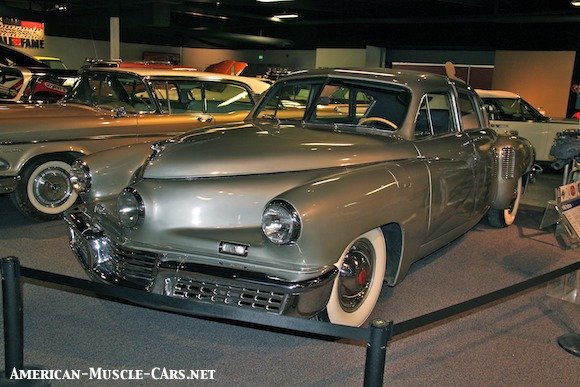
ABOVE: This lovely 1948 Tucker (they’re all 1948s) is the 32nd of 51 cars built.
BELOW: John Wayne owned this 1953 Corvette (the first year of production, and only 300 were built). “The Duke” had good taste in cars.
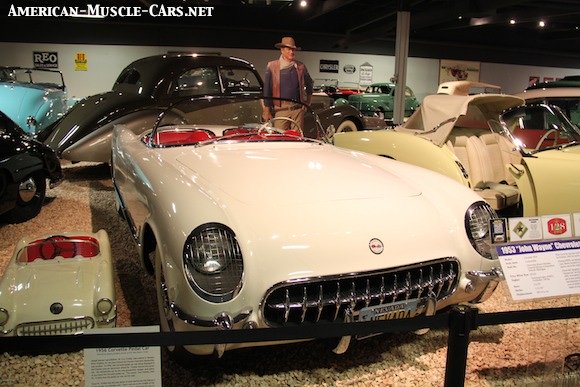
National Automobile Museum
“Modern Cars”, 1960’s, 1970s & beyond

ABOVE: A lowly Corvair sitting in front of yet another realistic and era-appropriate diorama. The collection includes both a first-year 1960 Corvair and 1969 Corvair built on the last day of production.

ABOVE: Star-cars are sprinkled through the Harrah Collection. This 1973 customized Cadillac was given to Elvis Presley as a birthday present from his father Vernon. Elvis drove it around for awhile then gave it to his Karate instructor.
BELOW: “Old Blue Eyes” (Frank Sinatra) owned this 1961 Ghia which was bodied in Italy on a Chrysler chassis and mechanicals.
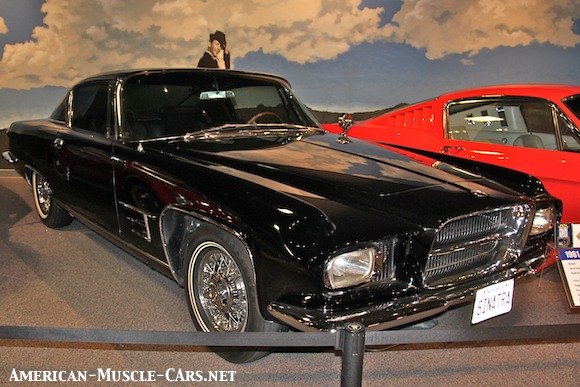
National Automobile Museum
Competition & Race Cars

ABOVE: Perhaps the first American Race Car, this very 1907 Thomas Flyer won the 1908 New York to Paris race that span 3 continents and over 22,000 mile and took 169 days.
BELOW: The 1965 Lotus-Ford driven by Dan Gurney in the ’65 Indy 500.
ABOVE: Don “The Snake” Purdhomme’s Chevy Monza funny car that he campaigned in the 1970s.
BELOW: Don Garlit’s rear-engine dragster which he drove to the AHRA and NHRA Championships in 1974. It ran the quarter in 5.78 seconds with a trap speed of 247.25 mph.

National Automobile Museum
Custom & Specialty Cars
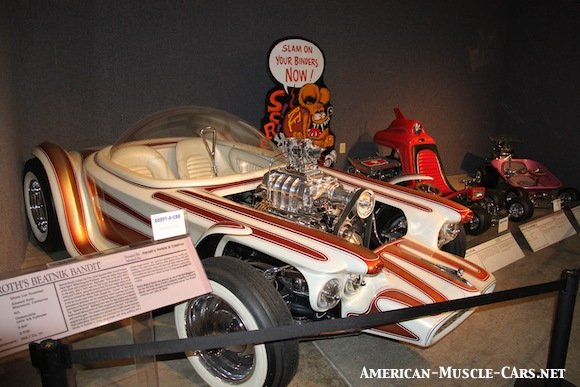
ABOVE: Ed “Big Daddy” Roth’s Beatnik Bandit was so outlandish at the time of its release in 1961 (and still today, for that matter) that Revell made it into a plastic model and Mattel turned them into Hot Wheels cars.
BELOW: Big Daddy’s follow on to the Beatnik Bandit was of course the Beatnik Bandit II, built in 1994. It’s one-piece bubble top was formed in a pizza oven.
ABOVE: John Delorean had big plans for his ill-fated gullwing car. He built two of these gold-plated specials as part of a promotion with American Express Gold Card, each priced at $85,000, a princely sum in 1981. The insurance alone was more than $1,000 per month as even a door ding could cost $24,000 to repair!
National Automobile Museum
Restoration Shop & Library

NATIONAL AUTOMOBILE MUSEUM’S RESTORATION EFFORTS
The first car Bill Harrah ever bought for the collection, what he thought was a 1907 Maxwell, turned out to be a 1911 model with incorrect parts. He found this out at a car show, and was so embarrassed by his mistake that he vowed never to let it happen again. He established a world-class automotive research library and restoration shop to ensure that all his cars would not only be restored to the highest standard, but would be correct and authentic down to the last detail. Above and below are shots of the actual shop where much of the restoration work and the work of maintaining the cars in the collection is done. Every car actually runs and drives and must meet the performance specifications of each car when new.
A WORD ABOUT PRESERVING YOUR CLASSIC CAR
Restoration of your classic car is just the beginning. Of course, it must be maintained and repaired as needed, using correct parts and methods. But beyond that, the environment in which your car lives every day will have a great impact on its long-term condition. Many collectors simply throw a car cover over their beauty and leave it at that. I have seen car covers literally “print” the paint with their pattern, over time. Some park them in a non-climate-controlled garage. Also not a good idea. Cars, especially old cars, do much better when the temperature and humidity stay comfortable and stable. Constant heating and cooling, hot during the summer, cold all winter, damages soft parts like rubber gaskets, mouldings, belts and hoses. It’s also not friendly to soft plastic, leather and fabric interior parts. Without temperature change swings, you’re also less likely to accumulate moisture through condensation, in tiny little nooks and crannies and behind things on the car. Probably the best way to store your classic car is in a clean garage space that is heated (and/or cooled if you live in a hot place) that can keep the space in the 65- to 70-degree range. One of the best, easiest, cheapest ways to accomplish this is with one of today’s modern garage heaters. You can bet that, summer or winter, whenever you visit the National Automobile Museum, the temperature will be comfortable and consistent all year long. And it gets very hot and very cold in Reno. AND, you’ll have the added benefit of a comfortable space in which to work on and enjoy your car, all year long.
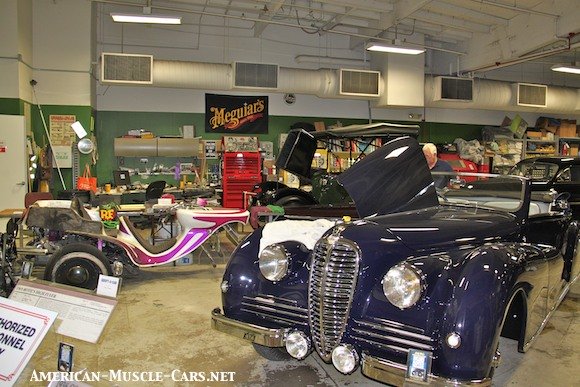
National Automobile Museum
NASA Exhibit
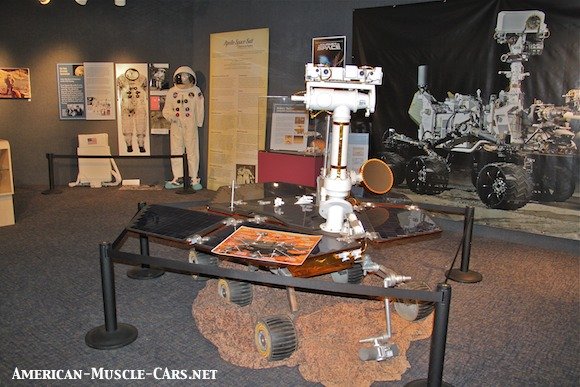
EXTENSIVE NASA SPACE EXPLORATION EXHIBIT
To bring things up to the modern day, what could be more modern than traveling into outer space? At the beginning of the tour is an entire room dedicated to NASA’s space programs including this replica of the Mars Rover, and much, much more.
VISIT THE NATIONAL AUTOMOBILE MUSEUM FOR YOURSELF
This is something that everyone should see. Bring your kids. Get them in touch with America’s colorful past, and the car’s contribution to our history. We are an exceptional nation, despite what certain establishment-types are saying to the contrary these days, and you can’t help but see it and appreciate it through these fantastic cars. For more information about the National Automobile Museum in Downtown Reno, Nevada, go to their website at www.automuseum.org and start planning your visit.


